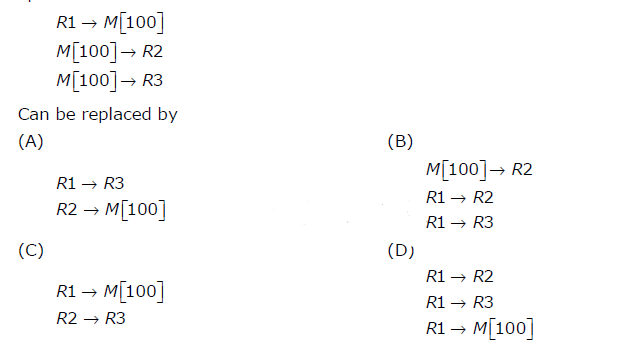Welcome to the Theory of Computation(TOC) MCQs Page
Dive deep into the fascinating world of Theory of Computation(TOC) with our comprehensive set of Multiple-Choice Questions (MCQs). This page is dedicated to exploring the fundamental concepts and intricacies of Theory of Computation(TOC), a crucial aspect of GATE CSE Exam. In this section, you will encounter a diverse range of MCQs that cover various aspects of Theory of Computation(TOC), from the basic principles to advanced topics. Each question is thoughtfully crafted to challenge your knowledge and deepen your understanding of this critical subcategory within GATE CSE Exam.
Check out the MCQs below to embark on an enriching journey through Theory of Computation(TOC). Test your knowledge, expand your horizons, and solidify your grasp on this vital area of GATE CSE Exam.
Note: Each MCQ comes with multiple answer choices. Select the most appropriate option and test your understanding of Theory of Computation(TOC). You can click on an option to test your knowledge before viewing the solution for a MCQ. Happy learning!
Theory of Computation(TOC) MCQs | Page 11 of 14
Explore more Topics under GATE CSE Exam
L1 = {a^m b^n a^n b^m ⎪ m, n ≥ 1}
L2 = {a^m b^n a^m b^n ⎪ m, n ≥ 1}
L3 = {a^m b^n ⎪ m = 2n + 1}



(s, a, Z0) → (s, XXZ0)
(s, ϵ, Z0) → (f, ϵ)
(s, a, X) → (s, XXX)
(s, b, X) → (t, ϵ)
(t, b, X) → (t,.ϵ)
(t, c, X) → (u, ϵ)
(u, c, X) → (u, ϵ)
(u, ϵ, Z0) → (f, ϵ)
The language accepted by the PDA is
S→aS∣A
A→aAb∣bAa∣ϵ
Which of the following strings is generated by the grammar above?
C1: For DFA (ϕ, Ʃ, δ, qo, F),
if F = ϕ, then L = Ʃ*
C2: For NFA (ϕ, Ʃ, δ, qo, F),
if F = ϕ, then L = Ʃ*
Where F = Final states set
ϕ = Total states set
Choose the correct option ?
1. For every non-deterministic Turing machine,
there exists an equivalent deterministic Turing machine.
2. Turing recognizable languages are closed under union
and complementation.
3. Turing decidable languages are closed under intersection
and complementation.
4. Turing recognizable languages are closed under union
and intersection.
(A) L2 – L1 is recursively enumerable.
(B) L1 – L3 is recursively enumerable
(C) L2 ∩ L1 is recursively enumerable
(D) L2 ∪ L1 is recursively enumerable.
Suggested Topics
Are you eager to expand your knowledge beyond Theory of Computation(TOC)? We've curated a selection of related categories that you might find intriguing.
Click on the categories below to discover a wealth of MCQs and enrich your understanding of Computer Science. Happy exploring!

.png)






